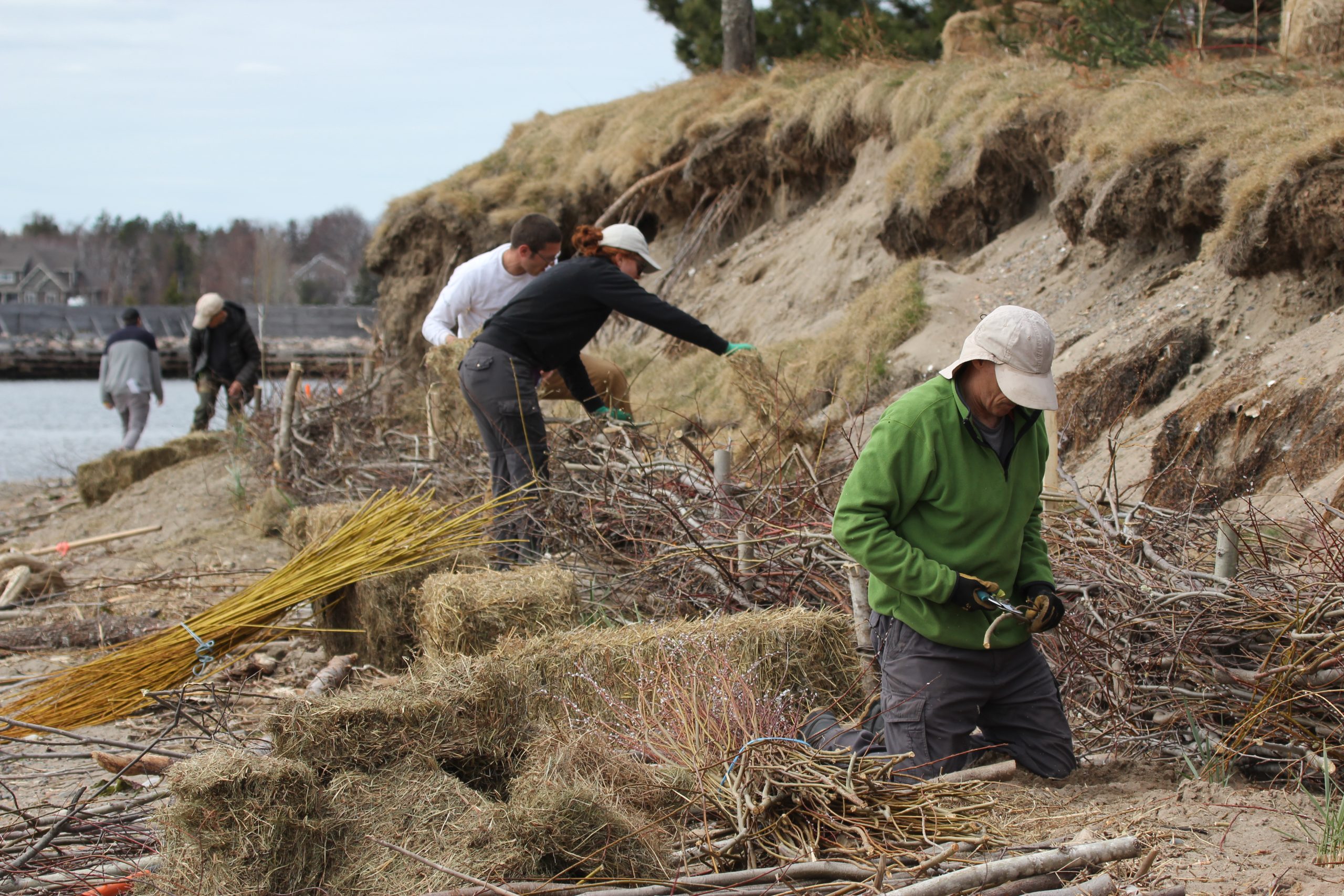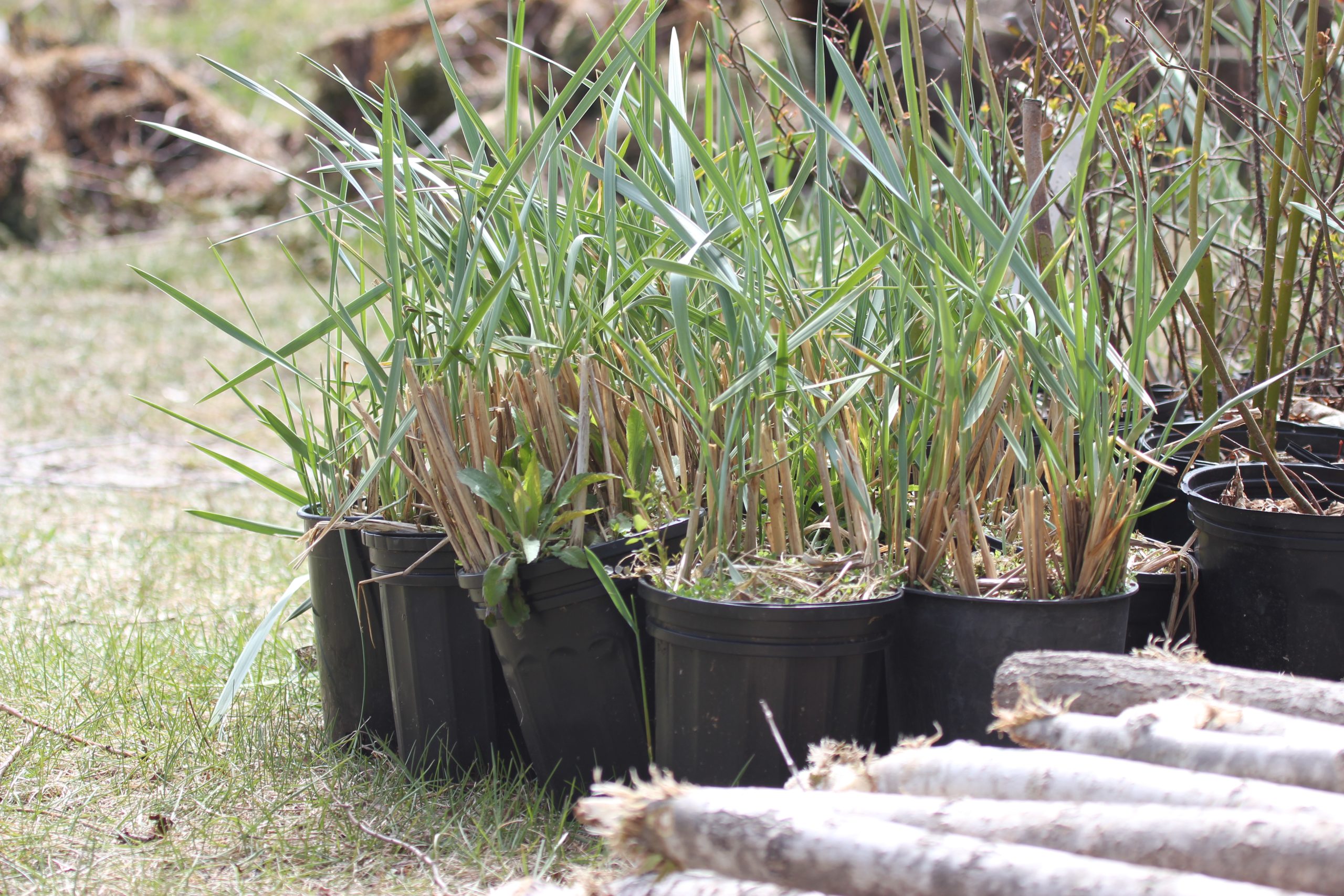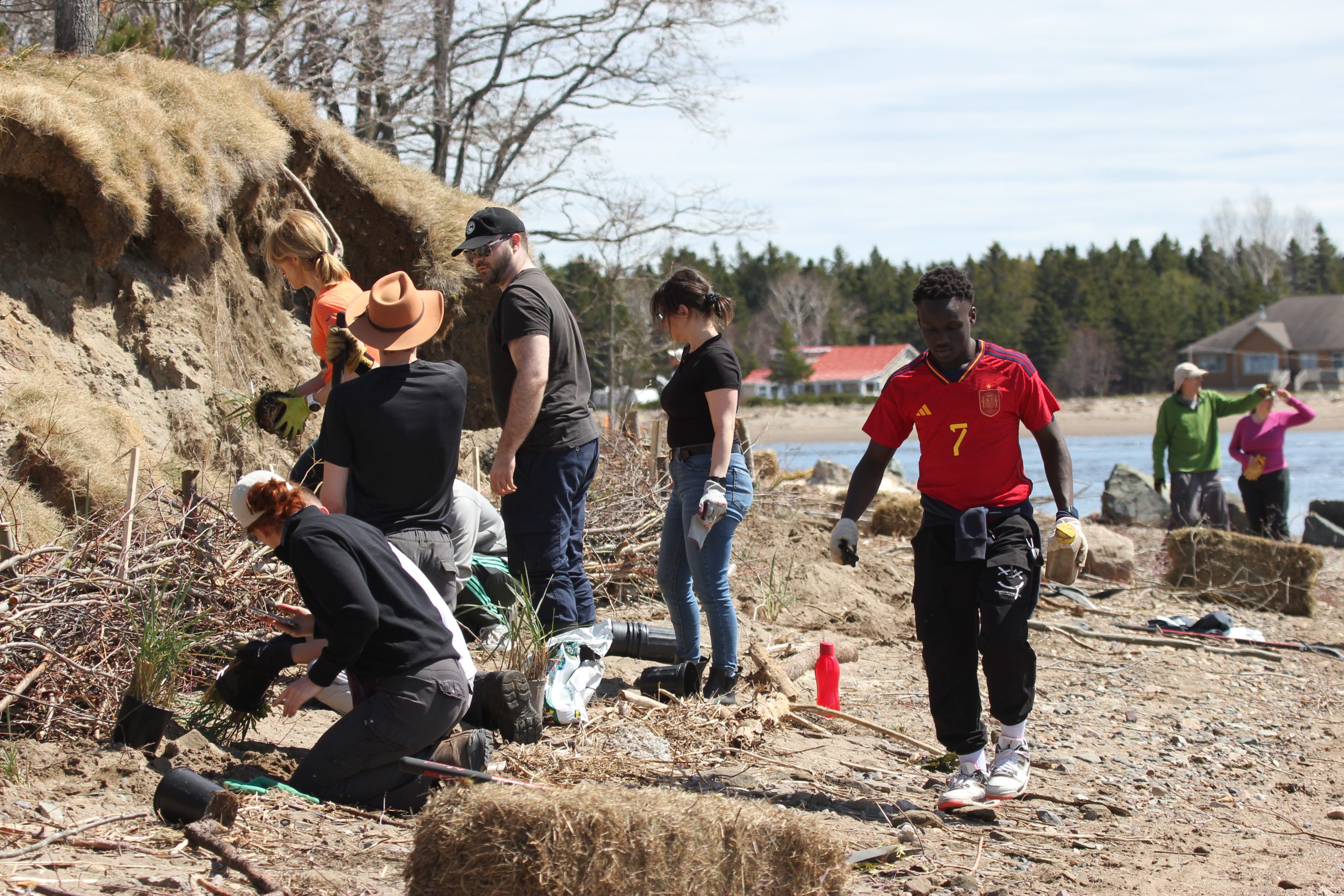Allison Manthorne, Birds Canada’s Aerial Insectivore Conservation Strategist
“Tree Swallow!”
A cheer goes up and 40 heads swivel to follow the dark form flitting over our heads. It’s the first sighting of the year in Bathurst, New Brunswick and a sure sign that winter has officially made way for spring.
We’ve gathered on the beach at Youghall Beach Municipal Park with shovels, pruners and gloves to tackle a novel restoration project: restoring a seaside bluff for Bank Swallows. Among the 40 participants are local residents, watershed organizations, horticulturalists, Indigenous leaders, federal biologists, and students from the nearby community college. The goal of this “living shoreline” project is to rewild the manicured lawn above and stabilize the base of the bluff to help the site withstand the brutal force of winter storms and summer downpours that are destroying this site. In time, the newly planted willow, bayberry and wild rose will knit the soil together and harbour a diverse community of insects to feed the Bank Swallows, while tempering the annual rate of erosion to a sustainable level. Community members will continue to check on the site’s progress and share monitoring data to help us measure the success of this project over the coming years.

Work for the Youghall Beach restoration project taking place before the arrival of the first Bank Swallows.

Newly planted willow, bayberry and wild rose will knit the soil together and harbour a diverse community of insects to feed the Bank Swallows, while tempering the annual rate of erosion to a sustainable level.
Projects and partnerships like this are the inspiration for my work at Birds Canada as an Aerial Insectivore Conservation Strategist.
Across the country, we are working with partners to identify knowledge gaps and emerging threats to birds, and putting our heads together to solve complex challenges.

Work for the Youghall Beach restoration project taking place before the arrival of the first Bank Swallows.
And Bank Swallows are facing a lot of challenges. This species has the steepest population decline of all Canada’s aerial insectivores—birds that eat flying insects while in flight—and aerial insectivores are declining more than any other group of birds in Canada.
Exactly why aerial insectivore populations are decreasing is a bit of a mystery. After all, the species of swifts, swallows, flycatchers and nightjars included in this guild differ quite a bit in their breeding habitats, migratory routes, overwintering areas and even the types of insects they feed on. But insects are the common thread that ties these species together, and insect populations are also in trouble across the globe.
Teasing apart the drivers of bird and insect declines and developing strategies to address them is not easy. It is an ongoing process that begins with careful research and scientific monitoring to understand how land management practices like pesticide application and timber harvesting affect bird habitat quality. Long-term monitoring programs like the Canadian Nightjar Survey and Project NestWatch also produce data to inform regional and national population trends and can tell us how climate change, agricultural intensification, and urban sprawl are impacting aerial insectivores. Partnerships with municipalities are also helping drive new policies and bylaws to strengthen bird habitat conservation at a broader scale. And Birds Canada’s supporters are speaking up and helping to amplify calls to halt harmful practices or developments and advocate for bird-friendly policies and legislation.
Of course, none of this is possible without the significant contributions of Citizen Scientists across Canada conducting bird surveys and contributing data each year. As well, partnerships like the Wolastoq and Kespukwitk Priority Place Initiatives have been instrumental in bringing together representatives from the agricultural sector, Indigenous nations, provincial and federal governments, academia, and conservation organizations to find common ground and map out strategies to recover species at risk and their habitats.
…which brings us back to the beach at Youghall Park on this sunny day in May. Bank Swallows are only weeks away from returning to this coastal bluff and all of us here today will be waiting with bated breath to see how they adapt to this changed landscape. With luck, and the combined efforts of this sunburned and sandy crew, they will be able to weather future storms and continue to thrive in this special place.
